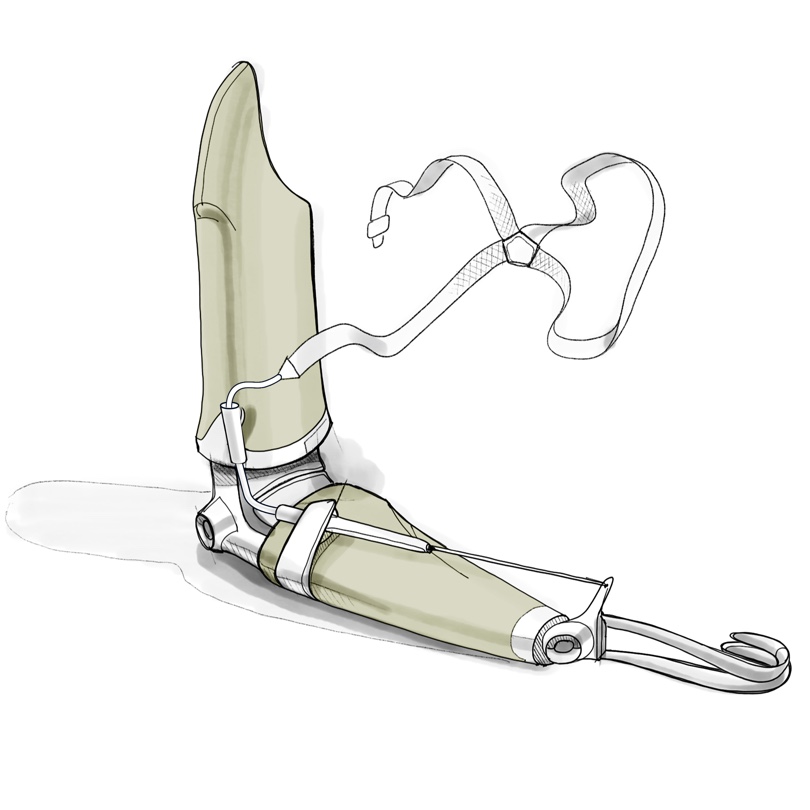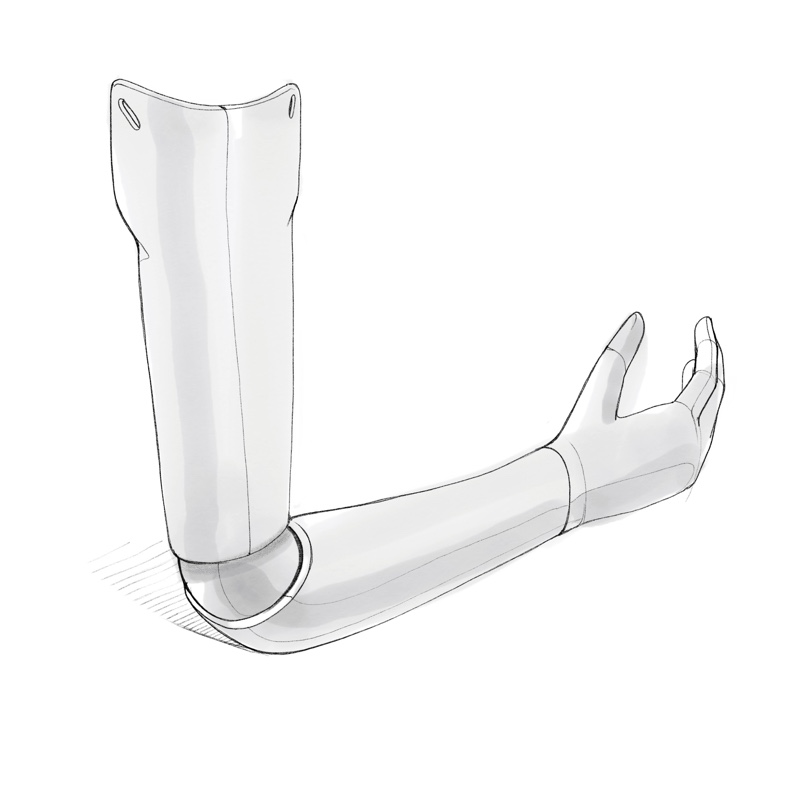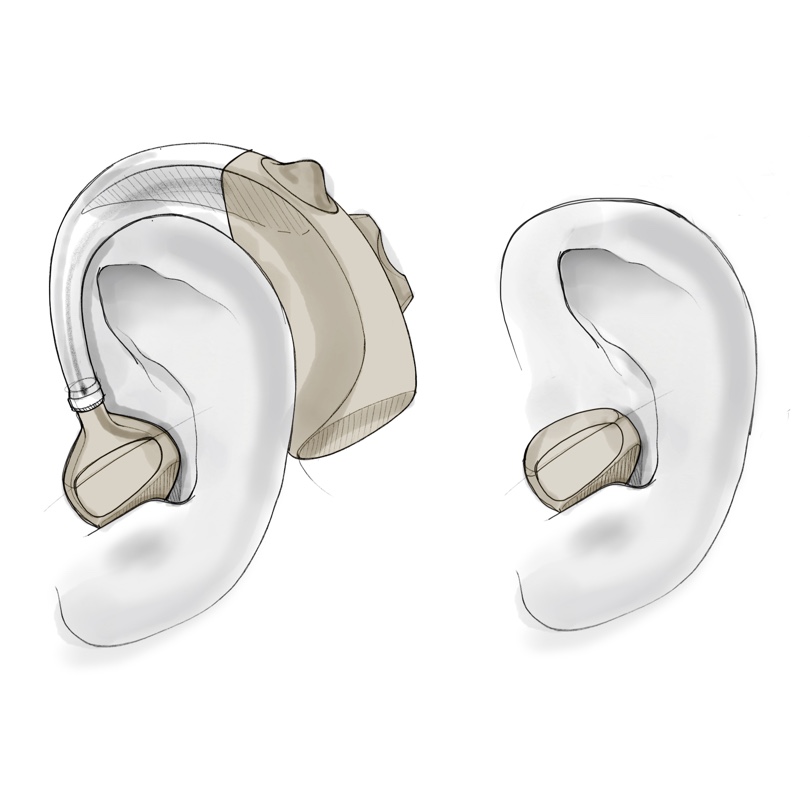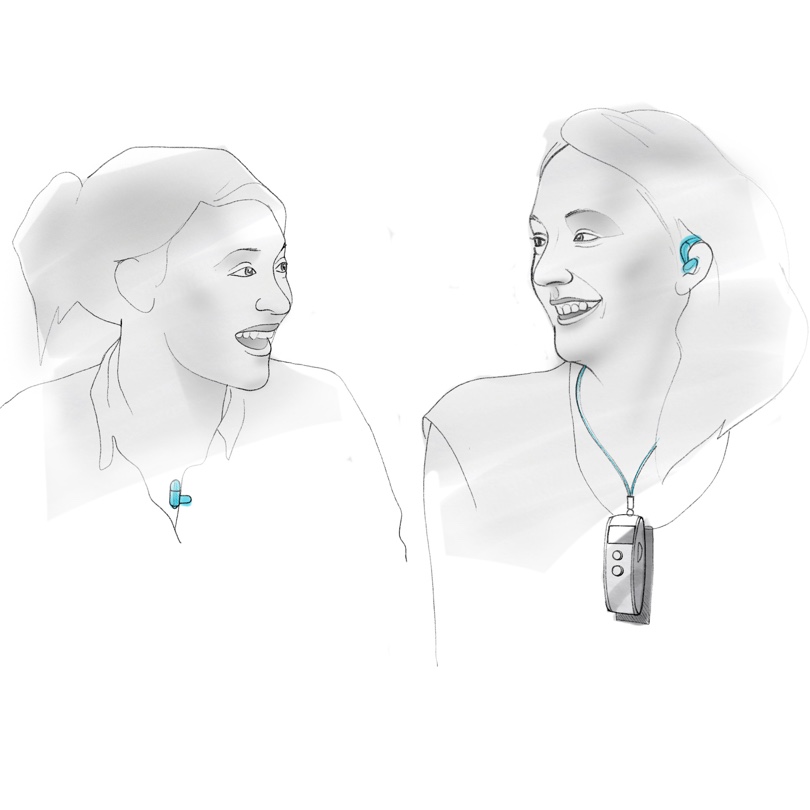Assistive Technology Devices for Speech Communication on a Wheelchair
Wheeled & Seated Mobility Devices
There are many different kinds of wheeled and seated mobility devices, a number of which can be customized according to the user's needs. These products can be divided into two broad categories: (1) manual devices, which are propelled by the user or an assistant; and (2) powered devices, which can have (a) manual steering with speed/braking control, (b) manual propulsion with power assist, or (c) power steering and speed/braking. There are many subgroups, options, and combinations within each category.
Read Chapter in Report
- DESCRIPTION
- BENEFITS
- LIMITATIONS
- PHYSICAL REQUIREMENTS
-
- DESCRIPTION
- BENEFITS
- LIMITATIONS
- PHYSICAL REQUIREMENTS
-
- Used by people who can walk but need help with balance and may need to have a seat readily available
-
- Inexpensive and readily available
- Extend range of reaching, lifting, and carrying
- Very limited support for seating balance and positioning
-
- Upper-extremity gross motor function
- Ability to walk
-
Manual Devices
Standard manual wheelchairs
-
- Intended for short-term use (less than 3 months)
- Heavy-duty and extra-heavy-duty varieties are intended for individuals who weigh 250 pounds or more
- Standard hemi wheelchairs are similar to standard manual wheelchairs but are intended for people of short stature or those who need to place their feet on the ground to get around
- Inexpensive and readily available
-
- Heavy and difficult to propel
- Primarily for use on smooth, firm, flat indoor surfaces
- Limited support for seating balance and positioning
- Fixed seating does not extend range of reaching, lifting, or carrying
- Upper-extremity gross motor function
-
-
Manual Devices
High-strength lightweight wheelchairs
-
- Intended for longer-term use (more than 3 months)
- Typically used by people who use a wheelchair for at least 2 hours a day, are able to self-propel the chair, and require this type of a chair to perform at least one mobility-related activity of daily living
- May be low cost, or may be more expensive but high-performance, depending on model
-
- Heavy and difficult to propel
- Primarily for use on smooth, firm, flat indoor surfaces
- Limited support for seating balance and positioning
- Fixed seating does not extend range of reaching, lifting, or carrying
- Difficult to transport
-
- Upper-extremity gross motor function
- Ability to self propel
-
-
Manual Devices
Ultra lightweight wheelchairs
-
- Intended for long-term use as a person's primary means of getting around
- Vary greatly in style, form, weight, and function
-
- Easier to lift and propel than other manual wheelchairs
- More durable and require less maintenance than other manual wheelchairs
- Offer customized fit and configurability
- Safer for most long-term users compared to other manual wheelchairs
- Suitable for all indoor environments and for common outdoor environments compliant with the Americans with Disabilities Act (ADA)
- Preferred support for seating balance and positioning
- Custom or adjustable seating extends rage of reaching, lifting, and carrying
-
- May be more expensive than other models
- Maintenance by experienced technicians
-
- Upper-extremity gross motor function
- Ability to self propel
-
-
Powered Devices
Power operated vehicles (POVs)
-
- Three- or four-wheel devices, also known as scooters
- Manually steered with controls for breaking and speed
- Intended primarily for outdoor use in ADA-compliant environments
- Some models designed for indoor use
- Easy to use
-
- Limited seating options
- Larger turning radius relative to wheelchairs
- Limited support for seating balance and positioning
- Requires additional equipment to transfer
- Regular tire and battery maintenance
-
- Cognitive ability to operate device
- Intact arm and hand function
- Upper-extremity gross motor function
-
-
Powered Devices
Group 1 powered wheelchairs
-
- Basic units, without specialized or custom seating and with standard programmable joystick controls
- Used by people whose needs are not adequately met by a manual wheelchair or a POV but who do not require a powered wheelchair from Group 3 or 4
- Power wheelchair groupings are based on Medicare coding
-
- Easy to use
- Lightweight relative to other power wheelchairs
-
- Primarily for indoor use on flat, smooth, firm, stable surfaces
- Limited advanced features, such as tilt or recline
- Limited support for seating balance and positioning
- Fixed seating does not extend range of reaching, lifting, or carrying
- Less durable for regular use
- Frequent tire, battery, hardware maintenance
-
- Cognitive ability to operate device
- Intact arm and some hand function
- Ability to independently transfer and shift weight
-
-
Powered Devices
Group 2 powered wheelchairs
-
- Meant for long-term use mostly in the home or outside in ADA-compliant environments
- Used by people who can still independently shift their weight
- Power wheelchair groupings are based on Medicare coding
-
- Rehabilitation and power seat functions available
- Adjustable seating balance and positioning
- Seating may extend range of reaching, lifting, carrying
- Can be used outdoors on ADA-compliant or non-ADA pedestrian surfaces
-
- Designed primarily for indoor and outdoor use on ADA-compliant or non-ADA pedestrian surfaces
- Moderate need for training, provided by qualified professional
- Not as durable as Group 3
-
- Cognitive ability to operate device
- Intact arm and some hand function
-
-
Powered Devices
Group 3 powered wheelchairs
-
- Meant for long-term use mostly in the home or outside in ADA-compliant environments
- Used by people who cannot independently shift their weight
- Power wheelchair groupings are based on Medicare coding
-
- Rehabilitation and power seat functions available
- Custom seating balance and positioning
- Seating may extend range of reaching, lifting, carrying
- Intermediate range and speed
- Can be used outdoors on ADA-compliant or non-ADA pedestrian surfaces
-
- Designed primarily for indoor and outdoor use on ADA-compliant or non-ADA pedestrian surfaces
- Moderate need for training, provided by qualified professional
- Typically more expensive than Group 2
- Maintenance requires skilled technicians
-
- Cognitive ability to operate device
- Intact arm and some hand function, although they can support alternative control systems for individuals without fine motor function
-
-
Powered Devices
Group 4 powered wheelchairs
-
- Ideal for active users, offering indoor and outdoor mobility
- Power wheelchair groupings are based on Medicare coding
-
- Longest range and highest speed
- Most customizable
- Most durable
- Powered standing and support for standing balance
- Some can navigate curbs, steps, stairs, and natural terrain
- Extend range of reaching, lifting, carrying
-
- Expensive
- Limited funding available
- Moderate need for training, provided by qualified professional
- Maintenance requires skilled technicians
-
- Cognitive ability to operate device
- Intact arm and some hand function, although they can support alternative control systems for individuals without fine motor function
-
- Prev
- Next
Upper Extremity Prostheses
A number of upper-extremity prosthetic devices are available to assist with gross and fine motor activities in complex combinations. Although selection of the appropriate device components is important, the comfort and fit of the socket, which is the framework that holds the device onto the remaining limb, directly affect individuals' use of the device.
Read Chapter in Report


- DESCRIPTION
- BENEFITS
- LIMITATIONS
- PHYSICAL REQUIREMENTS
-
- DESCRIPTION
- BENEFITS
- LIMITATIONS
- PHYSICAL REQUIREMENTS
-
Passive prostheses
-
- Do not offer active movement of any part of the prosthesis
- Often considered "cosmetic" but do provide some functionality when used to stabilize objects or assist the intact arm or hand with tasks
-
- Lightweight
- Best cosmetic restoration
- Can be used to stabilize objects and assist intact arm or hand with some tasks
- Very limited function
-
-
Body-powered prostheses
- Movement is body-powered, usually via a harness with a strap that lies over the lower third of the shoulder blade and connects to a cable that operates the device
-
- Relatively lightweight and durable
- Can be made waterproof
- Require minimal maintenance
- Less expensive than myoelectric or hybrid devices
- User can make some adjustments and repairs
-
- Require harnessing
- Weight limitations apply to lifting and carrying activities
- Terminal devices have only one grasp
- Because of harnessing they are difficult or impossible to use when the arm is lifted overhead
-
- Skin integrity
- Adequate shoulder blade strength and range of motion
-
Myoelectric prostheses
-
- Most common form of externally powered prosthetic device
- Runs on batteries and is usually controlled by electromyographic signals generated by the user's intact muscles
-
- Typically do not require harnessing or require less harnessing than body-powered systems
- Often can be operated in more planes of movement
- Terminal devices (e.g., hands/hooks) can generate more force
- Can appear more cosmetic
-
- Heavier than body-powered systems
- Can be water resistant but not waterproof
- Function disrupted if contact with the electrodes is disrupted by incorrect socket fit, scar tissue, excessive sweating
- Most users are unable to simultaneously control the terminal device and any other movement
- Need to be charged daily
- Require more maintenance and are more expensive than body-powered devices
-
- Skin integrity
- Ability to voluntarily contract isolated muscles
- Stable residual limb size to allow consistent socket fit and electrode contact with skin to receive electrical impulses
-
-
Hybrid prostheses
- Combines body-powered and externally powered components in one device, allowing user to operate the prosthetic elbow and hand simultaneously
-
- Allows elbow and hand operation at same time
- Lighter than a full myoelectric system
- Terminal devices can generate more force than body-powered
-
- Not waterproof
- Function disrupted if contact with the electrodes is disrupted by incorrect fit, scar tissue, excessive sweating
- Most users are unable to simultaneously control terminal device and any other movement
- Requires more maintenance than body-powered system
- Less resistant to water and dust
-
- Shoulder blade strength and range of motion
- Ability to voluntarily contract isolated muscles
- Consistent contact with skin to receive electrical impulses
- Consistent access to electricity
-
Terminal devices
-
- The end portion of a prosthesis, often replacing hand function or appearance and assisting the user with the ability to grip
- Many can be used with both myoelectric and body-powered prostheses
- Vary with different models
- Vary with different models
- Vary with different models
-
- Prev
- Next
Selected Hearing Technologies
Hearing assistive products and technologies and their benefits differ based on various factors, such as degree and type of hearing loss, specific daily needs, personal preferences, and financial considerations. Some devices may help overcome hearing difficulty in specific conditions, like listening at a distance, background noise, or highly reverberant rooms. Frequency modulation (FM) systems, infrared systems, and connectivity devices are assistive technologies that often work with hearing aids to improve hearing with auxiliary devices (e.g., phones, televisions, tablets, computers, and music players).
Read Chapter in Report


- DESCRIPTION
- BENEFITS
- LIMITATIONS
- PHYSICAL REQUIREMENTS
-
- DESCRIPTION
- BENEFITS
- LIMITATIONS
- PHYSICAL REQUIREMENTS
-
Hearing aids
-
- Wearable devices for people who are hard of hearing that improve the audibility of speech sounds and music
- Can be fitted behind the ear, in the ear, or in the ear canal, providing different features, levels of visibility, and ease of control
- Telecoil available in most hearing aids enables the user to access public loop systems without the need for other hardware
-
- If properly programmed, can improve audibility of speech sounds and ensure that other sounds are not too loud
- Situational to all waking hours
- Benefit may be limited by degree of hearing loss, distance from sound, and level of background noise
-
- Mild to profound hearing loss
- Ability to insert for use and manage daily care
-
-
FM/DM Remote microphone systems
- Use radio signals or digital modulation to transmit sound from a speaker's microphone or other sound system directly to a listener's hearing aid or to a receiver that is connected to earphones or a neck loop that converts the signal to one that can be received by the hearing aid
-
- Relative to hearing aids alone, help improve hearing in environments with background noise
- One-on-one communication, group discussions, and distance listening in quiet settings
-
- Benefits limited to single talker with microphone
- Portability may make more prone to breakdown or loss
-
- Mild to profound hearing loss
- Ability to manage on/off switch and controls
-
Personal sound amplification products (PSAPs)
-
- Wearable electronic devices that work to amplify environmental sound for individuals who are not hearing impaired
- Vary in quality and the ability to effectively mitigate impairment
- May be less expensive than hearing aids
-
- As of July 2017, not FDA-approved to mitigate hearing loss
- Benefit may be limited by degree of hearing loss, distance from sound, and level of background noise
- Amplification may not be appropriately customized for degree of hearing loss
- Microphone may still receive noise
-
- Mild to moderate hearing loss
- Ability to manage controls
- Ability to keep track of device
-
- Prev
- Next
Communication & Speech Technologies
These technologies generate or help restore speech using either specific medical equipment or more common technology like iOS or Android. The products below are divided into two main categories: (1) augmentative and alternative communication (AAC) technologies, which can help with functional communication when natural speech is limited; and (2) voice restoration devices, which help restore oral speech, often after head and neck cancer treatments.
Read Chapter in Report
- DESCRIPTION
- BENEFITS
- LIMITATIONS
- PHYSICAL REQUIREMENTS
-
- DESCRIPTION
- BENEFITS
- LIMITATIONS
- PHYSICAL REQUIREMENTS
-
AAC
Digitized speech generating devices
-
- Offer a recording of natural speech converted into a digital format
- Support prerecorded messages, such as greetings
- Recording time varies from a few minutes to more than 40 minutes
-
- Vary with different models, but are typically lightweight, portable, and relatively inexpensive
- Features, including control and selection methods, are customizable to needs of the user, including control and selection methods
- Multilingual
-
- Vary with different models, but generally need an age- and gender-matched partner to record messages
- Utterances limited to prerecorded messages (no spontaneous messages)
-
-
AAC
Synthesized speech generating devices
- Convert typed text into digital speech
-
- Vary with different models, but generally offer high-quality synthesized voice output and personal choice of synthesized voice
- Features, including control and selection methods, are customizable to needs of the user, including control and selection methods
-
- Vary with different models, but generally may provide slow communication time (due to input of message text) and some reduction in intelligibility of synthesized speech
- Wet or dusty conditions may be problematic
-
AAC
Mobile AAC technologies
- Mainstream technologies, such as tablets and smartphones, with software or applications that produce output using digitized, synthesized, or combined digitized and synthesized speech
-
- Readily available
- Typically smaller and less expensive than traditional AAC systems
- Offer many features beyond AAC function
- Social acceptance (devices are familiar to everyone)
-
- Features not customized to user
- May not meet needs of the user
- Access options limited for individuals with physical disabilities
-
Voice Restoration Devices
Tracheostomy speaking valves
- One-way valves placed on the end of a tracheostomy tube to permit redirection of exhaled air up through the vocal cords in the larynx
- Permit natural voicing following a tracheostomy
- Requires intact vocal cords
- Tracheostomy with intact larynx
-
Voice Restoration Devices
Handheld electrolarynxes
- Small, hand-held, battery operated devices that, when placed on the cheek or neck, vibrates air in the individual's oral cavity and approximates the sound of voicing
- Permit voicing following a total laryngectomy (removal of the voice box)
-
- Voice restoration is inferior to use of a tracheoesophageal voice prosthesis
- Hand-held
- Battery-operated
-
- Total laryngectomy
- Oral structures and movements necessary to produce speech
- Ability to hold device and manipulate button
-
Voice Restoration Devices
Tracheoesophageal voice prostheses
- One-way valves placed in a surgically created puncture through the tracheoesophageal wall, allowing air to flow from the lungs to the esophagus to produce substitute voicing
-
- Voice restoration following a total laryngectomy is superior to use of an electrolarynx
- May allow hands-free operation
-
- Require insertion by provider or user
- Commonly need to be replaced every 2-3 months
-
- Total laryngectomy
- Oral structures and movements necessary to produce speech
- Insertion of valve between trachea and esophagus
-
Voice Restoration Devices
Voice amplifiers
- Speaker-type devices with a head-mounted or lavaliere type microphone that amplify the user's voice
- Increase intelligibility of speech for individuals unable to produce sufficiently loud speech, including those who communicate with an electrolarynx or tracheoesophageal voice prosthesis
- Battery-operated
- Ability to produce speech
- Prev
- Next
Assistive Technology Devices for Speech Communication on a Wheelchair
Source: https://webassets.nationalacademies.org/assistivedevices/

0 Response to "Assistive Technology Devices for Speech Communication on a Wheelchair"
Post a Comment